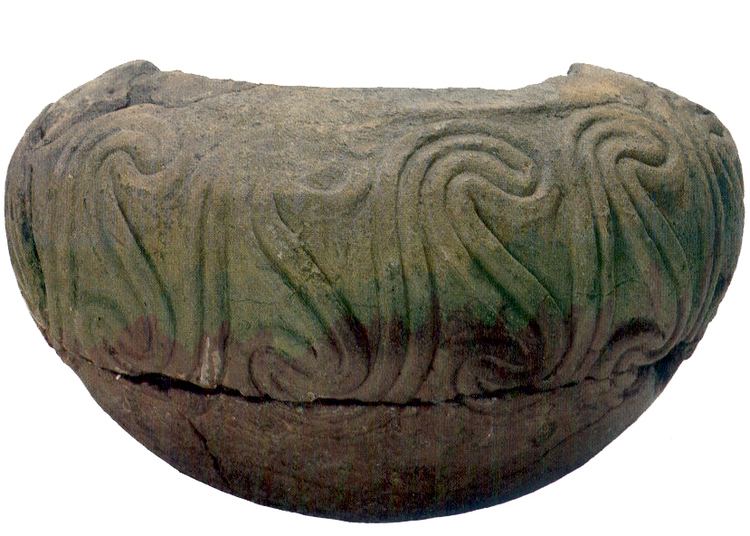 | ||
Butmir Culture was major bronze age culture which existed in Butmir, near Sarajevo, in vicinity of Ilidža in Bosnia and Herzegovina, dating from the Neolithic period. It is characterized by its unique pottery, and is one of the best researched European cultures from 5100–4500 BC. It was part of the larger Danube civilization.
Contents
History
The Butmir culture was discovered in 1893, when Austro-Hungarian authorities began construction on the agricultural college of the University of Sarajevo. Various traces of human settlement were found dating to the Neolithic period. Digs were begun immediately, and lasted until 1896.
The finds caused interest among archaeologists worldwide. They were largely responsible for the International Congress of Archaeology and Anthropology being held in Sarajevo in August 1894. The most impressive finds were the unique ceramics, which are now found in the National Museum of Bosnia and Herzegovina.
Certain characteristics of the Butmir pottery designs (e.g. its resemblance with Kamares style Minoan pottery) made some suggest a connection to the Minoan culture on Crete. Of course this was during the same time that some suggested Troy was found in the Neretva river valley, and overwhelming modern opinion is that the Butmir people were a unique culture of their own in the Sarajevo area.
The culture disappeared during the Bronze Age, most likely conquered by the Illyrians who settled the area at the time. The tribe who occupied the area after them were the Daesitates.
Settlements
The Butmir culture was the home for several large settlements, among them was the site of Okolište in Bosnia dating to 5200-4500 B.C. with population estimates between 1000-3000 people. The settlement was largest in the early phase (5200 B.C) with an area of 7.5 hectare, from there it gradually declined to reach the size of 1.2 heatare in 4500 B.C. The site likely consisted of parallel rows of houses that ranged in size from four to ten meters in length. The site also likely had a series of ditches surrounding it with a single entrance. Other known settlements was Butmir and Obre.
The site of Okolište would likely have been an egalitarian society with no evidence of social stratification. Most animal remains found in Okolište belong to cattle, while a fair amount belonged to sheep, goats, and pigs. The diet of the Okoliste people consisted mainly of cattle, emmer, einkorn, and lentils. Although there was an importance of agriculture and animal husbandry, wild game was still hunted as a source of food.
